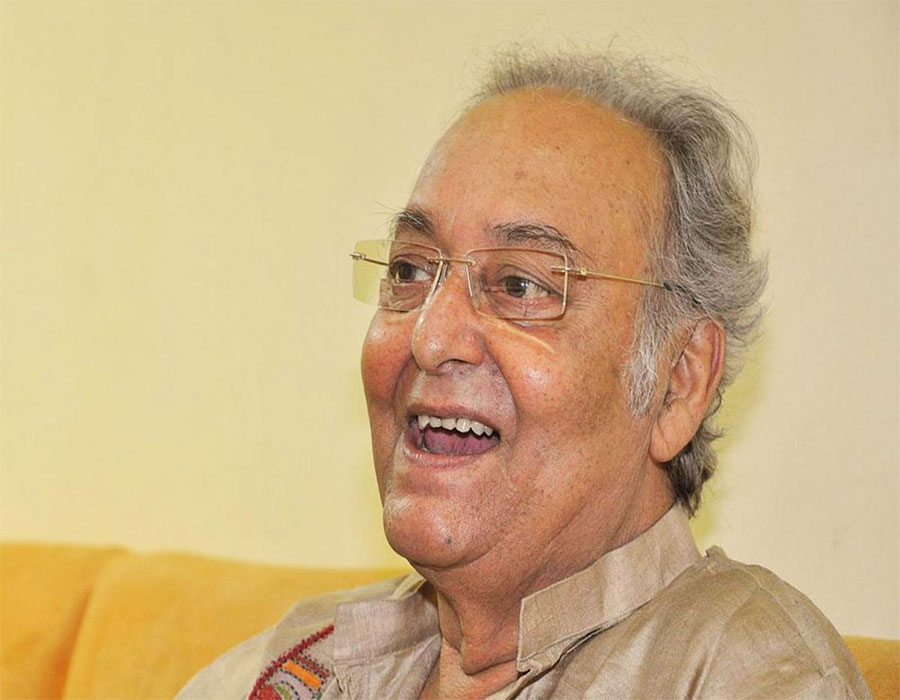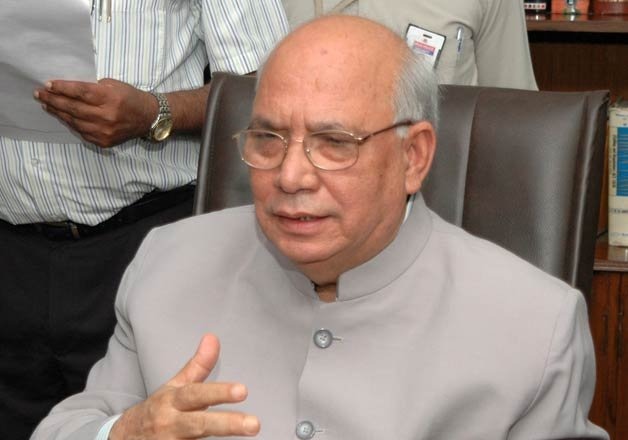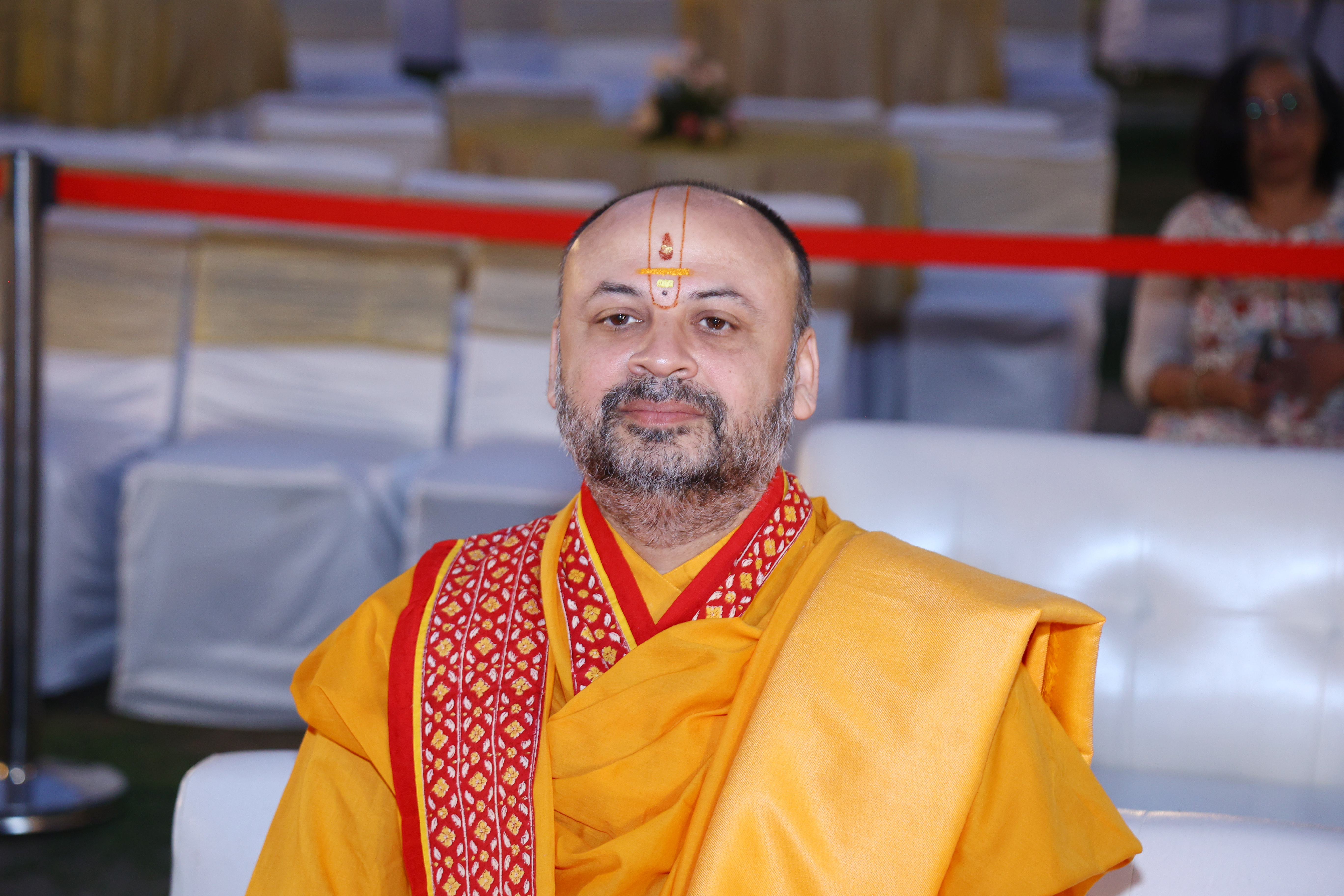Bollywood in Mumbai would have been neither as rich nor gifted without the many bounties of Bengal, like the late Soumitra Chatterjee
Having seen a few of Soumitra Chatterjee-led films, I cannot forget him, or conceptually, Tollywood as a whole. The only film studio I have seen was at Tollygunge in the days when the actor had to wear a light blue dhoti so that it showed up as white on the screen. Bollywood in Mumbai would have been neither as rich nor gifted without the many bounties of Bengal, like the late Soumitra Chatterjee.
There was Anil Biswas, who discovered Talat Mahmood, the silken voice; even Talat was first discovered singing Bengali songs as Tapan Kumar on All India Radio, Kolkata (called Calcutta in those days). There were the unforgettable Hemant Kumar, the versatile Manna Dey and many other artistes, musicians and directors. The wonderment is that these men and women, born, bred and having turned artistes in Kolkata, came to what was then called Bombay (the Mumbai of today) to blossom. Arguably, the proudest name of Indian filmdom has been the late Satyajit Ray, India’s only Oscar-winning film-maker. Yet, it is Bollywood that has flourished whereas Tollywood has merely survived. What makes this paradox viable?
Tollywood is art plus art, while Bollywood is craft plus business. In some ways, Tollywood reflects the essence of what has been the Bengali elite for the best part of two centuries. To begin with, it was presumed that theatre and cinema were for the classes, while for the masses, the answer was the jatra (a popular folk-theatre). A simple song from a popular movie called Harano Sur appealed to most listeners. I tried it once with the servants, also of the neighbourhood, but their response was cool. The song was sung on screen by Suchitra Sen: “Aykbaar bolo, tumi je aamar.”
For the Bengali ethos, the businessman was a “byabshadar” and the “banik” was an OBC, unlike northern and western India, where he is a twice born and permitted to wear the sacred thread. My belief is that Tollywood film-making has been influenced by this ethos.
Once, when the Rajya Sabha proceedings were awaited to begin, I got a chance to have a 15-minute chat with Mrinal Sen, who has been rated second only to the distinguished Satyajit Ray. Among the two or three questions I happened to pose, one was on why Bengali film themes seldom cater to the masses, although they are often about poor people. His reply was that, “When we began, it was presumed that our market was not large enough like the Hindi cinema.” When I pointed out that West Bengal plus Bangladesh would be 20 crore people, he was slightly taken aback and merely said, “We must think about it.” My impression is that many a film was a reflection of the director’s choice without sufficient consideration for what the audience would love to watch. When the director and the audience happened to coalesce, the film would be a hit. The Bengali language is melody when spoken and probably poetry when written. So far, wonderful; but it has in the past discouraged even prime ministerial aspirants from learning Hindi with any degree of accuracy.
The late Jyoti Basu, Siddharth Shankar Ray and Pranab Mukherjee could not speak Hindi spontaneously. Priya Ranjan Dasmunsi was the first Bengali I heard speaking in Hindi. Any educated person among the elite spoke English. The second emotional preference was for French. Now, no doubt things are changing as we have heard Babul Supriyo, Minister Of State in the Narendra Modi Government, speaking fluent Hindi.
The West Bengal economy does need a boost and the film industry could well be the one to bring in employment. It does not require much investment by the State and Bengalis generally are naturally artistic, be it in acting, music and what not. The only real requirement is that of attitude and priority. Bengali film-makers must take into account that all films are not media of artistic expression. Most of them must have a large dose of popular entertainment, too. The market extends from West Bengal to Bangladesh and several districts of Assam. Suitable movies in Bengali could be dubbed in Hindi and other languages, which could extend the market considerably.
Remember, the film industry in India began with Kolkata at its centre, with New Theatres founded by Birendranath Sircar and the great Kundan Lal Saigal as its outstanding star. Incidentally, Saigal had come to Kolkata from Punjab. He picked up Bengali quite well and acted in seven Bengali films, produced by New Theatres. Rabindranath Tagore first heard Saigal before giving consent for the first time to a non-Bengali singing his songs. Saigal endeared himself to the whole of Bengal through his 30 Bengali songs.
(The writer is a well-known columnist and an author. Views expressed are personal)








 OpinionExpress.In
OpinionExpress.In















Comments (0)